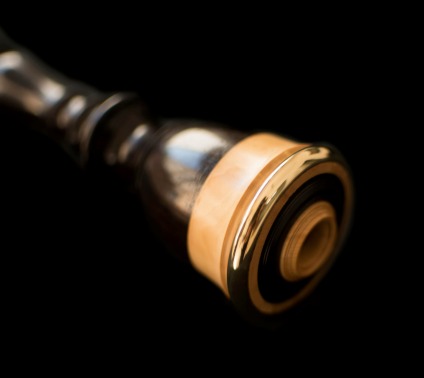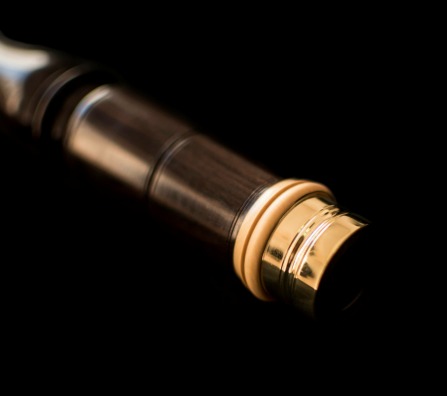The Bagpipe Society
Tools of the Trade
Diego Piñeiro was born in Santiago de Compostela in 1978. Since 2004, he makes Galician gaitas and Mallorcan xeremies. A carpenter by trade, he taught himself the instrument making skills by visiting many artisans, sharing advice and methods. He currently combines his bagpipe making practice with the construction and repair of metal wind instruments after a few years of specialised training in Bremen, northern Germany.

The shape, size and material of the rings that decorate a bagpipe are, in large part, elements that differentiate and identify each particular sort of bagpipe. In different bagpipes we can find rings of very different types and materials, from silver to wood, horn, bone, synthetic materials… However, the main function of the rings in bagpipes is not decorative but to reinforce those weak parts from blows or breaks due to changes in pressure or temperature. This function is performed with special efficiency by metal rings.
In the world of bagpipes there are different ways of using metal to make rings, which we could basically separate into three categories: ordinary tube pieces; rings made specifically for bagpipes, carved and decorated, that, once finished, are placed on the instrument; or rings that are integrated into the instrument when it is made, adapting the metal to the shape of the wooden structure. This third type is the one used in Galician bagpipes, and I find it interesting to talk about.

These rings are traditionally made from a sheet of brass, nickelsilver or silver from which a rectangle is cut out and soldered with silver, forming a ring. This ring, once well rounded, is worked in two ways: in the case of lace rings, one adjusts the diameter of the wood until we have a good fit, leaving a groove somewhere, usually in the middle. When placing the ring, the metal is pressed with a steel roller, inserting the metal into the groove. At this point, one only has to stretch the straight parts to the either side of the groove, thus achieving a perfect fit. This type of ring is completely integrated in the wood and is impossible to extract. Additionally, the pressure on the weak part of the socket is even, there is no slack, so the reinforcement function is perfect. On top of this, the molecular structure of the metal was stressed by be deformed on the wood, so the result is a beautiful ring, hard and with a perfect fit.
In the case of chanter rings or drone ends, the moulding is different: on a hardwood mould, the metal is worked until it forms the middle of the curve. Then the wooden element is adjusted and the metal is bowed over it. It is a relatively complex technique, which requires skill and experience. Some makers do this work with steel rollers, rejecting the lathe, others in the traditional way, use a hammer. In either case, the result is a ring completely integrated in the piece, forming an inseparable unit.
The combination of these two techniques, along with the use of other materials of contrasting colors, opens an unlimited range of aesthetic options, which makes each instrument unique, and allows to expand the creativity of the builder, making this on of the most beautiful jobs to have.
From Chanter Summer 2017.
- Data Processing Notice (GDPR)
@BagpipeSociety on X (formally known as Twitter)
TheBagpipeSociety on Instagram
 BagpipeSociety on Facebook
BagpipeSociety on Facebook
Something wrong or missing from this page? Let us know!
